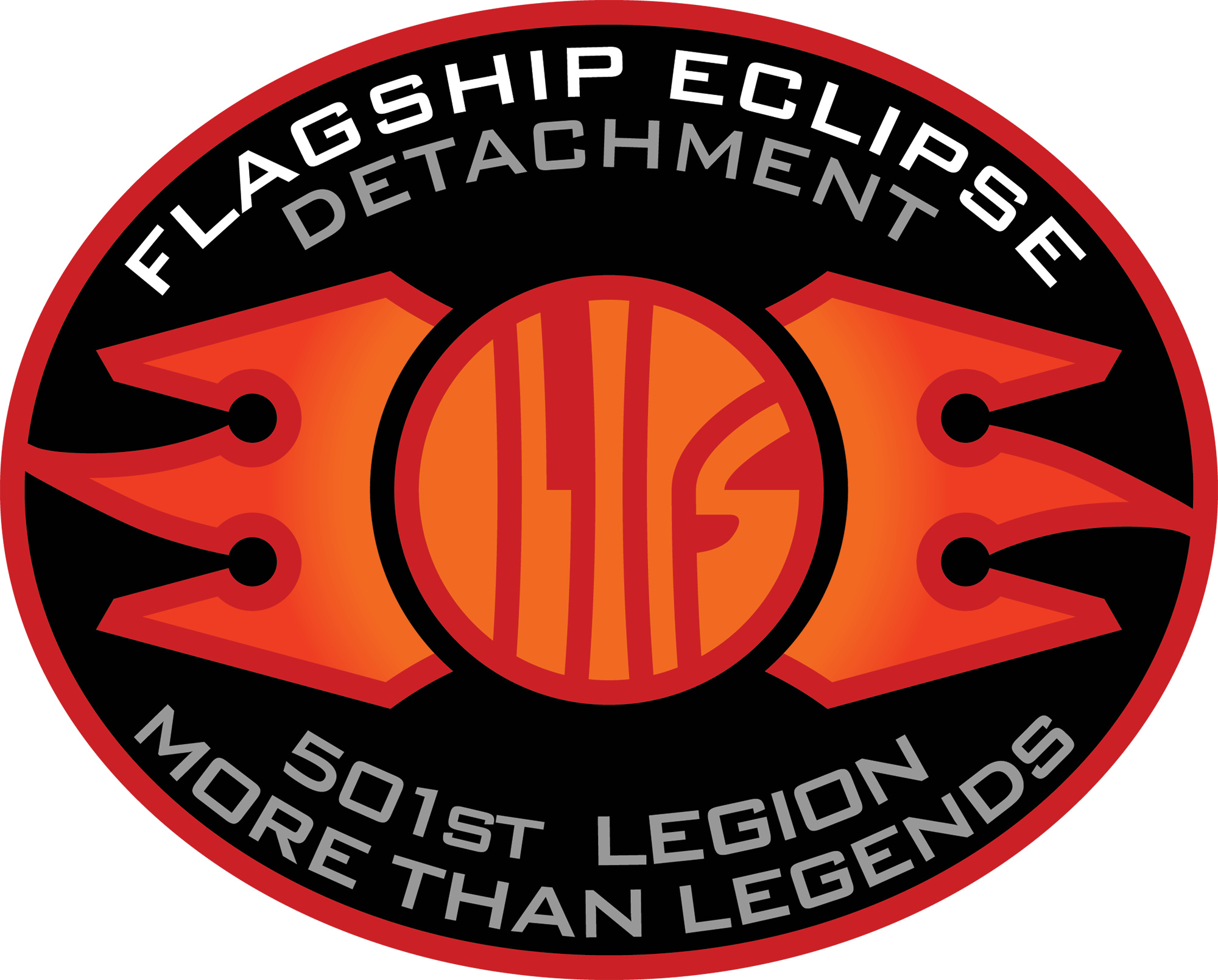
It seems inevitable that we’ll one day see another Marvel anime adaptation released in the future, considering the long history the comic book company has with the medium. Disney has proven in the past that they are further exploring the anime world, with the anthology series Star Wars Visions remaining a prime example. As Marvel and anime fans alike await for a new partnership in the future, we thought now would be the perfect time to examine previous crossovers that helped change the world for all parties involved. Needless to say, there were more than a few Marvel anime collabs to choose from.
The Avengers Vs. Attack on Titan
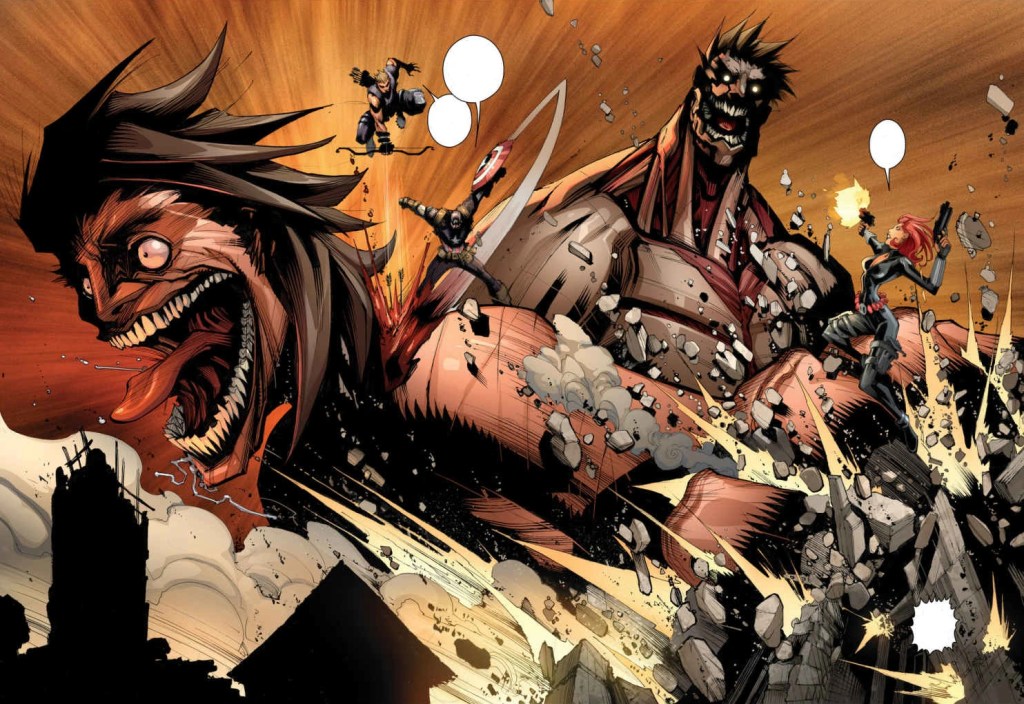
“Attack on Avengers” was a one-shot story that was written by none other than Attack on Titan creator Hajime Isayama, pitting Earth’s Mightiest Heroes against the flesh-eating behemoths. Hitting North America in 2015, the special story doesn’t have much meat on the bone in terms of fleshing out this crossover, but it made for an amazing meeting of worlds. Ending on a cliffhanger that saw the Guardians of the Galaxy entering the fray, the crossover story proved how well the worlds of North American comic books and Japanese manga could intertwine if the need arose.
Deadpool Meets My Hero Academia’s All Might

Deadpool: Samurai wasn’t just the first manga dedicated to Marvel’s resident Merc With a Mouth, it also acted as the first time Wade Wilson would crossover with the world of UA Academy. While fighting the Mad Titan Thanos, Deadpool teams up with none other than All Might, the former symbol of peace who has long been a key character in My Hero Academia. While this crossover, much like the Avengers fighting the Titans, was never animated, there is hope that this unique crossover could one day hit the screen.
Marvel’s Madhouse Anime

Arguably the biggest Marvel anime collaboration rolled around in 2010, when Studio Madhouse (One-Punch Man, Trigun) decided to create not one, but four anime series exploring Marvel characters. The series included X-Men, Wolverine, Iron Man, and Blade, with each running for one season. Unfortunately, this collaboration didn’t result in any future seasons, but it did prove that the Marvel Universe can fit right into the anime medium with its own colorful characters.
Avengers Confidential
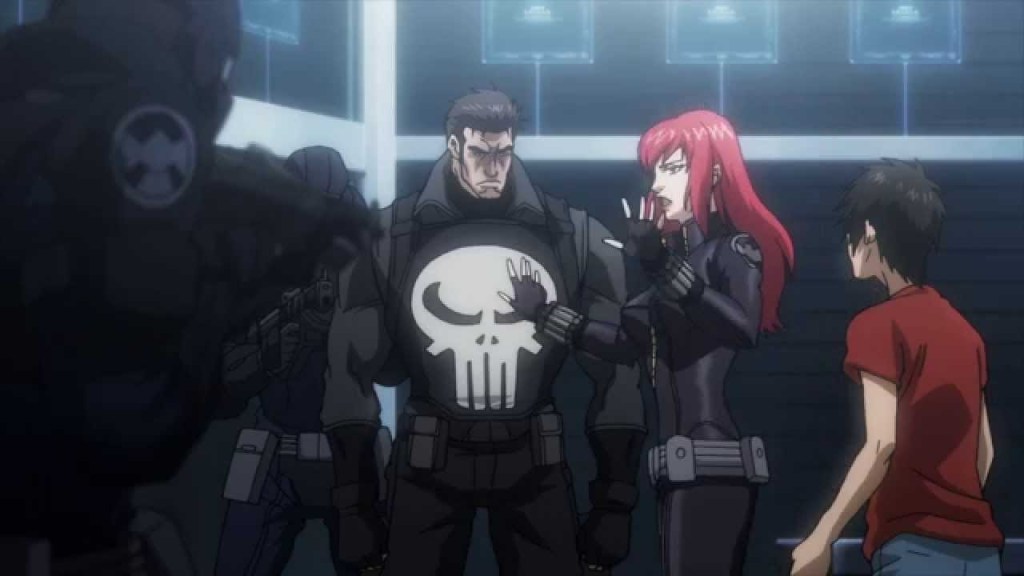
While not being connected to the aforementioned Marvel anime series from Studio Madhouse, the production studio would return to work with Marvel Entertainment once again in 2014. Avengers Confidential: Black Widow & Punisher might be billed as a story surrounding the Earth’s Mightiest Heroes, but Madhouse forged a story that focuses far more on Frank Castle than Steve Rogers or Tony Stark. Sent on a wild globe-hopping mission with the Black Widow, the movie works to introduce anime fans to what a “Punisher anime” might look like. In a surprising twist, Frank was voiced by The Walking Dead’s Norman Reedus, bringing in the Death Stranding actor into the Marvel Universe once again.
Marvel Disk Wars: The Avengers

Marvel Disk Wars first arrived in 2014 and often, it feels like a long-lost example of how Marvel could work in the anime world. Produced by Toei Animation (One Piece, Dragon Ball) in collaboration with Marvel Entertainment, the series ran for a surprising fifty-plus episodes and did an admirable job of highlighting countless Marvel heroes and villains alike. The big hook of the series was that the Avengers were captured inside of “disks” as main characters had to effectively use Marvel’s finest in battles as though they were Pokemon.
Marvel Future Avengers
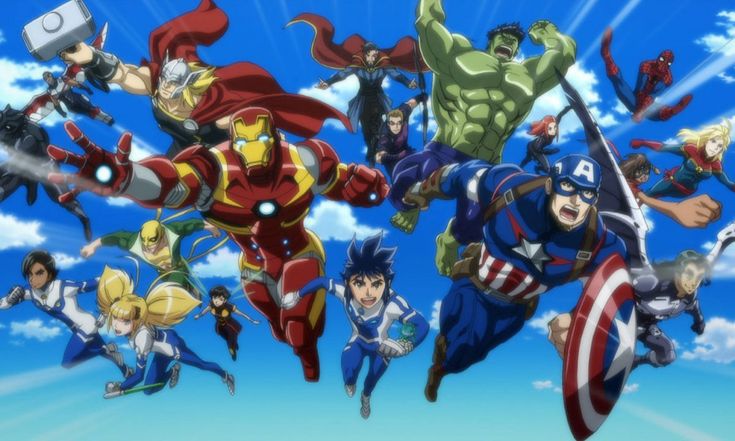
Once again, Studio Madhouse teamed up with Marvel to bring the Avengers out of their “disks” and put them into a scenario where they were attempting to change the fate of super-powered children led astray. The series followed Chloe, Makoto, and Adi, three kids who were being raised by Hydra under the belief that the organization was altruistic. Much like Disk Wars, Future Avengers lasted for two seasons and did a good job of placing the spotlight on some of Marvel’s finest.
Spider-Man: The Manga

In 1970, Spider-Man: The Manga swung into Japan and presented a very different take on the wallcrawler. Rather than creating new stories focusing on Peter Parker in the medium, this web-spinning superhero sported a new name in Yu Komori. While he still received his superpowers from a radioactive spider and had the same costume as his American counterpart, Komori found himself accidentally killing someone with his newfound abilities. While this series ran for eight volumes, it never did receive an anime adaptation of its own, which is a shame considering all the original characters the series added to “spider-lore.”
The Marvel Mangaverse
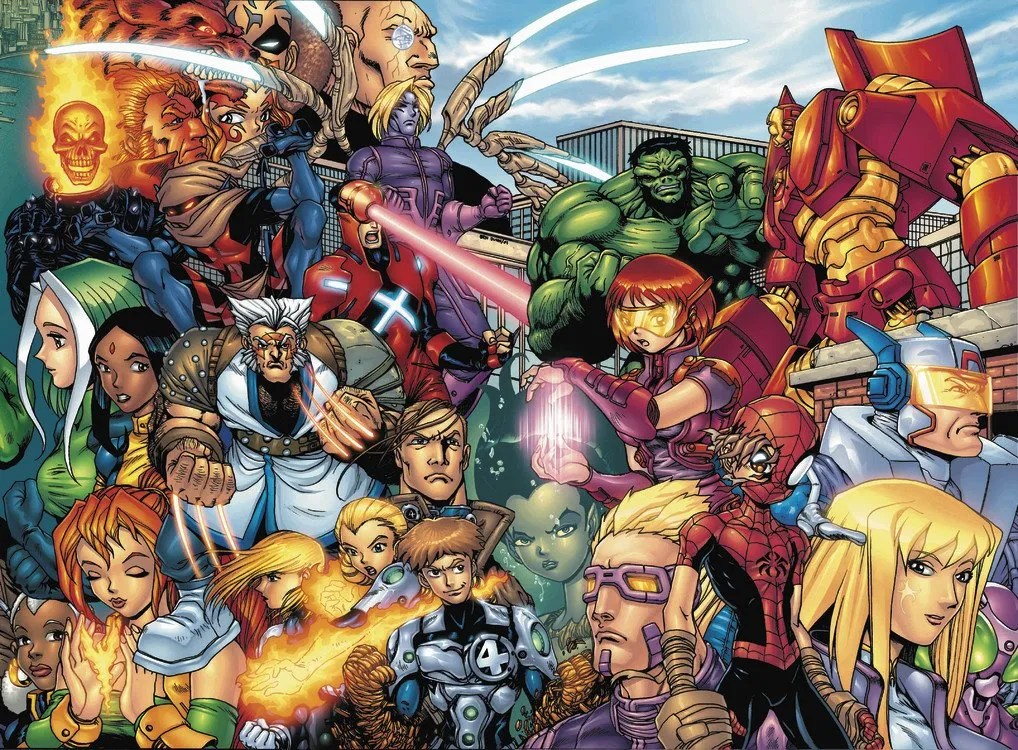
The Marvel Mangaverse first debuted in 2000 from Marvel Comics proper, with the North American comic book publisher attempting to recreate their universe with a “manga aesthetic.” On top of giving many of its heroes and villains a new manga aesthetic in the looks department, many of Marvel’s biggest characters were given entirely new backstories, powersets, and personalities to reflect this new world. Of all the characters introduced in this “Mangaverse,” it was Spider-Man’s manga doppelganger who had the most longevity thanks to the Spiderverse, as this new take on the wallcrawler would make future appearances past the universe closing its doors.
Spider-Man: Fake Red
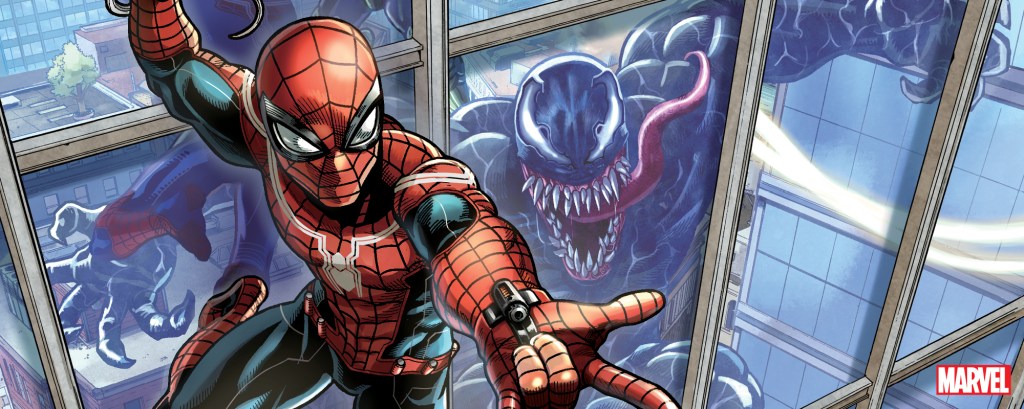
Yuusuke Oosawa penned Spider-Man: Fake Red, a manga that resulted from the team-up between Marvel and Shueisha. Rather than recreating the lore of New York City’s most popular hero, Fake Red takes the chance to see what a high schooler who discovers Peter Parker’s costume will do if he wants to do good but doesn’t have spider-powers to rely on. Arriving in 2019, this one and done story would work well as an anime film, so fingers crossed we one day see this Marvel manga collab get the full anime treatment.
Stan Lee in Heroman
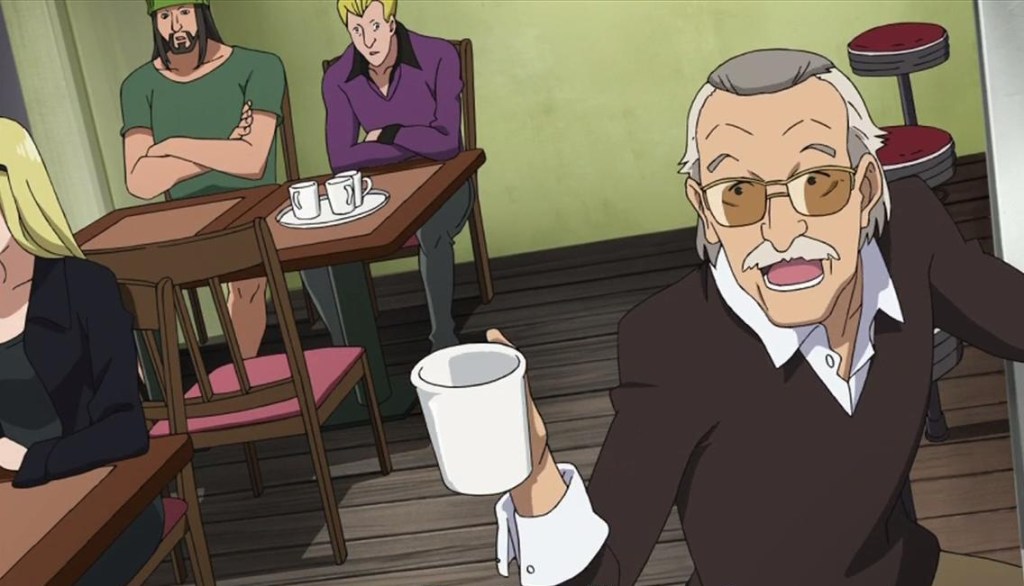
While this might not be technically a Marvel crossover, it was worth mentioning thanks to Stan “The Man” Lee’s involvement. Writing a new manga for Square Enix, Lee himself was brought in as a character for the anime adaptation of his work Heroman. What you might find more surprising than the anime cameos themselves from Lee is that said anime adaptation was produced by none other than Studio BONES, years prior to the production house’s work on My Hero Academia. Luckily, if you want to check out the twenty-six-episode series, it’s available to stream on Crunchyroll.
The post 10 Times Marvel And Anime Changed The World appeared first on ComicBook.com.
